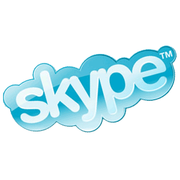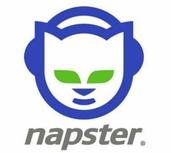
Twitter came onto the internet marketing scene in 2007 primarily. With its never before seen unique spin on advertising and keeping in touch with friends, it has become a popular tool to use. Most people who use twitter are using it daily, several times a day in fact. The basic structure of Twitter is in the term, micro-blogging. Micro-blogging is a form of multimedia blogging that allows users to send brief text updates or micro-media such as photos or audio clips and videos. Twitter is a site with one specific question, "What are you doing?", users tend to answer this question in hundreds of thousands of ways and send a 140 character long message out to all the people who follow their tweets. Its that simple, you just share messages, read others, and send yours.
Twitter was founded in March 2006 by Jack Dorsey, Evan Williams, and Biz Stone. The real history surrounding the way Twitter was developed is more so due to Jack Dorsey and his career path through the years. Jack worked as a software developer, developing software for courier services and took notice to how, as the different businesses used the software and the main office could keep track of their various delivery or service vehicles, essentially, the employees were just reporting back what they were doing at that time. Nevertheless, it kept the dispatch office in constant contact with the drivers, which is a big deal as far as efficiency is concerned. Basically, what Twitter has become is a mixture of 3 different things.
· Jack's Dispatch Software
· Instant Messaging
· Text messaging
With the coupling of these three elements of real time messages being sent, many things are possible. News tends to spread like wildfire on Twitter, friends are able to spawn a get-together in seconds, and marketers are able to instantly share their new ideas or ventures with every single one of their potential or current customers. To many this does not show value and at times Twitter comes under a bit of criticism. Truthfully, Twitter is a very useful tool, provided that you have contacts which either care what you have to say or can benefit from receiving information from you. For marketers, the service is generally used to broadcast URL's to their various pages, products, and services which can be a tedious task.
Many people have since developed different applications meant to manage the features of Twitter and automate the process which aids in managing one's time spent tweeting. These applications can be used for many different tasks on Twitter usually called "grunt work" if you are a marketer. Some features you will need are, unlimited account creation, management of all your accounts with the click of a button, auto-follow by targeted keywords/username/own followers, auto-unfollow of those who do not choose to follow you, auto-tweets through multiple accounts, direct messages to all followers, automatic reporting of Twitter trends to you per category, and some can even let you operate your Twitter accounts anonymously through a proxy IP address. Sadly though, most Twitter applications and management tools cannot do all of the above and very few can deliver an all in one solution to all your Twitter needs.
If your aim is set on driving traffic to your website using Twitter, the only program capable of all the above tasks, that I know of, is Smash Tweet. Try it out today! Julie Kerr can help you make $500 to $5000 per month from home. Twitter is a great opportunity for anybody who wants that sorely needed second income. Julie Kerr's Twitter Marketing Software can help you bring enough traffic to your website and generate laser targeted leads. Check out Smash Tweet - Ultimate Twitter Marketing Software.
Article Source (http://ezinearticles.com/?The-History-of-Twitter&id=3789420)
Twitter was founded in March 2006 by Jack Dorsey, Evan Williams, and Biz Stone. The real history surrounding the way Twitter was developed is more so due to Jack Dorsey and his career path through the years. Jack worked as a software developer, developing software for courier services and took notice to how, as the different businesses used the software and the main office could keep track of their various delivery or service vehicles, essentially, the employees were just reporting back what they were doing at that time. Nevertheless, it kept the dispatch office in constant contact with the drivers, which is a big deal as far as efficiency is concerned. Basically, what Twitter has become is a mixture of 3 different things.
· Jack's Dispatch Software
· Instant Messaging
· Text messaging
With the coupling of these three elements of real time messages being sent, many things are possible. News tends to spread like wildfire on Twitter, friends are able to spawn a get-together in seconds, and marketers are able to instantly share their new ideas or ventures with every single one of their potential or current customers. To many this does not show value and at times Twitter comes under a bit of criticism. Truthfully, Twitter is a very useful tool, provided that you have contacts which either care what you have to say or can benefit from receiving information from you. For marketers, the service is generally used to broadcast URL's to their various pages, products, and services which can be a tedious task.
Many people have since developed different applications meant to manage the features of Twitter and automate the process which aids in managing one's time spent tweeting. These applications can be used for many different tasks on Twitter usually called "grunt work" if you are a marketer. Some features you will need are, unlimited account creation, management of all your accounts with the click of a button, auto-follow by targeted keywords/username/own followers, auto-unfollow of those who do not choose to follow you, auto-tweets through multiple accounts, direct messages to all followers, automatic reporting of Twitter trends to you per category, and some can even let you operate your Twitter accounts anonymously through a proxy IP address. Sadly though, most Twitter applications and management tools cannot do all of the above and very few can deliver an all in one solution to all your Twitter needs.
If your aim is set on driving traffic to your website using Twitter, the only program capable of all the above tasks, that I know of, is Smash Tweet. Try it out today! Julie Kerr can help you make $500 to $5000 per month from home. Twitter is a great opportunity for anybody who wants that sorely needed second income. Julie Kerr's Twitter Marketing Software can help you bring enough traffic to your website and generate laser targeted leads. Check out Smash Tweet - Ultimate Twitter Marketing Software.
Article Source (http://ezinearticles.com/?The-History-of-Twitter&id=3789420)
Other Links about Twitter
A brief history of Twitter:
http://gigaom.com/2009/02/01/a-brief-history-of-twitter/
How Twitter was Born:
http://www.140characters.com/2009/01/30/how-twitter-was-born/
Twitter has 190 Million Users Tweeting 65 Million Times a Day:
http://www.techcrunch.com/2010/06/08/twitter-190-million-users/
http://gigaom.com/2009/02/01/a-brief-history-of-twitter/
How Twitter was Born:
http://www.140characters.com/2009/01/30/how-twitter-was-born/
Twitter has 190 Million Users Tweeting 65 Million Times a Day:
http://www.techcrunch.com/2010/06/08/twitter-190-million-users/
MySpace

The face of Myspace is undoubtedly Tom Anderson, co-founder and now dot com millionaire. Every new user is automatically connected with their first "friend", who is Tom himself. He is known for his trademark profile picture, a low-key snapshot of him wearing a white t-shirt and sitting at his computer. (It is hard to believe that he is now an industry giant.)
It was in July of 2003 that Tom, Chris DeWolfe and a small team of programmers launched what would become a cultural phenomenon, Myspace.com. DeWolfe was a business graduate, while Tom had several liberal arts degrees, including English and Film. Its unique interface helped the site to boom immediately, eventually leading to a multi-million dollar corporate buyout.
At the time of Myspace's birth, the reigning champ on the social networking scene was Friendster.com. However, the Friendster phenomenon (which has peaked at around 27 million users) would be nothing compared to Myspace's impact. Once Myspace appeared, Friendster users left in droves. Why? This is often attributed to Myspace's customizable profile pages. While Friendster allowed users to enter personal info and upload photographs, Myspace actually supported fully customizable pages and media. Soon, millions of teenagers and young adults were learning rudimentary HTML.
Source (http://music.lovetoknow.com/History_of_Myspace)
It was in July of 2003 that Tom, Chris DeWolfe and a small team of programmers launched what would become a cultural phenomenon, Myspace.com. DeWolfe was a business graduate, while Tom had several liberal arts degrees, including English and Film. Its unique interface helped the site to boom immediately, eventually leading to a multi-million dollar corporate buyout.
At the time of Myspace's birth, the reigning champ on the social networking scene was Friendster.com. However, the Friendster phenomenon (which has peaked at around 27 million users) would be nothing compared to Myspace's impact. Once Myspace appeared, Friendster users left in droves. Why? This is often attributed to Myspace's customizable profile pages. While Friendster allowed users to enter personal info and upload photographs, Myspace actually supported fully customizable pages and media. Soon, millions of teenagers and young adults were learning rudimentary HTML.
Source (http://music.lovetoknow.com/History_of_Myspace)
Other Links about Myspace
An Early Biography of Facebook:
http://mashable.com/2006/08/25/facebook-profile/
Facebook the Fastest Growing Social Network (2008): http://www.techtree.com/India/News/Facebook_Largest_Fastest_Growing_Social_Network/551-92134-643.html
Almost Half of U.S. on Facebook:
http://socialmediatoday.com/index.php?q=roywells1/158020/416-us-population-has-facebook-account
The Full Story of How Facebook was Founded:
http://www.businessinsider.com/how-facebook-was-founded-2010-3#we-can-talk-about-that-after-i-get-all-the-basic-functionality-up-tomorrow-night-1
http://mashable.com/2006/08/25/facebook-profile/
Facebook the Fastest Growing Social Network (2008): http://www.techtree.com/India/News/Facebook_Largest_Fastest_Growing_Social_Network/551-92134-643.html
Almost Half of U.S. on Facebook:
http://socialmediatoday.com/index.php?q=roywells1/158020/416-us-population-has-facebook-account
The Full Story of How Facebook was Founded:
http://www.businessinsider.com/how-facebook-was-founded-2010-3#we-can-talk-about-that-after-i-get-all-the-basic-functionality-up-tomorrow-night-1

Facebook is the second largest social network on the web, behind only MySpace in terms of traffic. Primarily focused on high school to college students, Facebook has been gaining market share, and more significantly a supportive user base. Since their launch in February 2004, they’ve been able to obtain over 8 million users in the U.S. alone and expand worldwide to 7 other English-speaking countries, with more to follow. A growing phenomenon, let’s discover Facebook.Originally called thefacebook, Facebook was founded by former-Harvard student Mark Zuckerberg (while at Harvard) who ran it as one of his hobby projects with some financial help from Eduardo Saverin. Within months, Facebook and its core idea spread across the dorm rooms of Harvard where it was very well received. Soon enough, it was extended to Stanford and Yale where, like Harvard, it was widely endorsed.
Before he knew it, Mark Zuckerberg was joined by two other fellow Harvard-students – Dustin Moskovitz and Chris Hughes – to help him grow the site to the next level. Only months later when it was officially a national student network phenomenon, Zuckerberg and Moskovitz dropped out of Harvard to pursue their dreams and run Facebook full time. In August 2005, thefacebook was officially called Facebook and the domain facebook.com was purchased for a reported $200,000.
Source (http://mashable.com/2006/08/25/facebook-profile/)
Other Links about Facebook
An Early Biography of Facebook:
http://mashable.com/2006/08/25/facebook-profile/
Facebook the Fastest Growing Social Network (2008): http://www.techtree.com/India/News/Facebook_Largest_Fastest_Growing_Social_Network/551-92134-643.html
Almost Half of U.S. on Facebook:
http://socialmediatoday.com/index.php?q=roywells1/158020/416-us-population-has-facebook-account
The Full Story of How Facebook was Founded:
http://www.businessinsider.com/how-facebook-was-founded-2010-3#we-can-talk-about-that-after-i-get-all-the-basic-functionality-up-tomorrow-night-1
http://mashable.com/2006/08/25/facebook-profile/
Facebook the Fastest Growing Social Network (2008): http://www.techtree.com/India/News/Facebook_Largest_Fastest_Growing_Social_Network/551-92134-643.html
Almost Half of U.S. on Facebook:
http://socialmediatoday.com/index.php?q=roywells1/158020/416-us-population-has-facebook-account
The Full Story of How Facebook was Founded:
http://www.businessinsider.com/how-facebook-was-founded-2010-3#we-can-talk-about-that-after-i-get-all-the-basic-functionality-up-tomorrow-night-1
YouTube

YouTube, the brand, was invented by Interaction Designer Herbert Elwood Gilliland III while working at a start-up called Grand Illusion Studios in 1998 and 1999. The company was founded by Dr. Don Marinelli and Dr. Scott Stevens. It was based at the University Technology Research Center on Henry St. near Carnegie Mellon University campus.
The company had developed a "Synthetic Interview" technology which displayed video clips when the user spoke or typed in keywords into an application. The video clips would then act like answers from an Eliza program, and would be displayed as answers.
Other Links about YouTube:
http://www.articlealley.com/article_1482289_81.html
http://www.fastcompany.com/magazine/142/it-had-to-be-you.html
http://www.blogherald.com/2010/11/02/the-youtube-story/
The company had developed a "Synthetic Interview" technology which displayed video clips when the user spoke or typed in keywords into an application. The video clips would then act like answers from an Eliza program, and would be displayed as answers.
Other Links about YouTube:
http://www.articlealley.com/article_1482289_81.html
http://www.fastcompany.com/magazine/142/it-had-to-be-you.html
http://www.blogherald.com/2010/11/02/the-youtube-story/
Other Links about Youtube
History of Youtube:
http://www.articlealley.com/article_1482289_81.html
The Breif History of Youtube:
http://www.fastcompany.com/magazine/142/it-had-to-be-you.html
Youtube History in Charts:
http://www.blogherald.com/2010/11/02/the-youtube-story/
http://www.articlealley.com/article_1482289_81.html
The Breif History of Youtube:
http://www.fastcompany.com/magazine/142/it-had-to-be-you.html
Youtube History in Charts:
http://www.blogherald.com/2010/11/02/the-youtube-story/
Skype

Skype was founded in 2003 by the Swedish entrepreneur Niklas Zennstrom and Dane Janus Friis. The Skype software was developed by Estonian developers Ahtl Heinia, Priit Kasesalu and Jaan Tallinn, the same individuals who together with Niklas and Janus were also originally behind the peer-to-peer file sharing software Kazaa. In April 2003, Skype.com and Skype.net domain names were registered. In August 2003, the first public beta version was released.
Other Links about Skype
What is Skype? What Makes Skype? Where is Skype?
http://about.skype.com/
Skype - A Baltic Success Story:
https://emagazine.credit-suisse.com/app/article/index.cfm?fuseaction=OpenArticle&aoid=163167&coid=7805&lang=EN
Telecommunications Without Telephones:
http://www.dataart.com/company/press-center/dataart-in-the-news/telecommunications.htm Universities Banning Skype:
http://arstechnica.com/old/content/2006/09/7814.ars
http://about.skype.com/
Skype - A Baltic Success Story:
https://emagazine.credit-suisse.com/app/article/index.cfm?fuseaction=OpenArticle&aoid=163167&coid=7805&lang=EN
Telecommunications Without Telephones:
http://www.dataart.com/company/press-center/dataart-in-the-news/telecommunications.htm Universities Banning Skype:
http://arstechnica.com/old/content/2006/09/7814.ars
Napster

Shawn Fanning, the creator, and Sean Parker, his business partner, released the original Napster in June 1999. Fanning wanted an easier method of finding music than by searching IRC or Lycos. John Fanning of Hull, Massachusetts—Shawn's uncle—ran all aspects of the company's operations for a period from its office on Nantasket Beach. The final agreement gave Shawn 30% control of the company, with the rest going to his uncle. It was the first of the massively popular peer-to-peer file distribution systems, although it was not fully peer-to-peer since it used central servers to maintain lists of connected systems and the files they provided, while actual transactions were conducted directly between machines.
Source (http://en.wikipedia.org/wiki/Shawn_Fanning)
Source (http://en.wikipedia.org/wiki/Shawn_Fanning)
Other Links Relating to Napster
Napster and its Effects on the Music Industry: An Empirical Analysis:
http://www.scipub.org/fulltext/jss/jss63303-309.pdf
From Culture to Politics Napster’s Impact is Still Felt Today:
http://www.theglobeandmail.com/news/technology/digital-culture/download-decade/thank-you-napster/article1014979/
The Napster Phenomenon: Turning the Music Industry Upside Down:
http://murphylibrary.uwlax.edu/digital/jur/2001/woelfel.pdf
A Short History of File Sharing:
http://www.sean.co.uk/a/musicjournalism/var/historyoffilesharing.shtm
http://www.scipub.org/fulltext/jss/jss63303-309.pdf
From Culture to Politics Napster’s Impact is Still Felt Today:
http://www.theglobeandmail.com/news/technology/digital-culture/download-decade/thank-you-napster/article1014979/
The Napster Phenomenon: Turning the Music Industry Upside Down:
http://murphylibrary.uwlax.edu/digital/jur/2001/woelfel.pdf
A Short History of File Sharing:
http://www.sean.co.uk/a/musicjournalism/var/historyoffilesharing.shtm
